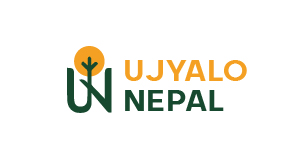Championing Change: Living in Harmony with Wildlife in Lowland Nepal
This project engages local stakeholders — including farmers, youth, and women’s groups — to create practical solutions that reduce conflicts, improve safety, and generate wildlife-friendly income sources.
Species
PARTNER
Conservation in Asia, the world’s largest continent, is across vast natural landscapes including the expanses of the Mongolian Steppes to the tropical jungles and islands of South East Asia.
livelihood programs.
Fencing installed
PROJECT COST
Championing Change: Living in Harmony with Wildlife in Lowland Nepal
The lowland regions of Nepal, particularly the Terai Arc Landscape, are internationally recognized for their rich biodiversity and ecological importance. These areas serve as vital habitats for endangered species such as tigers, elephants, and one-horned rhinoceroses
The lowland regions of Nepal, particularly the Terai Arc Landscape, are internationally recognized for their rich biodiversity and ecological importance. These areas serve as vital habitats for endangered species such as tigers, elephants, and one-horned rhinoceroses. However, the close proximity of human settlements to protected areas has led to a rise in human-wildlife conflict (HWC), posing serious challenges to both conservation efforts and community well-being.
To address this issue, ZSL Nepal has launched its flagship initiative, “Championing Change: Living in Harmony with Wildlife in the Lowlands of Nepal,” which aims to promote peaceful coexistence between humans and wildlife while strengthening the socio-economic resilience of affected communities.
As a key local implementing partner, Ujyalo Nepal is actively working within the buffer zones of Bardia National Park. The project specifically targets conflict mitigation and coexistence promotion in the Terai Arc Landscape,a globally important biodiversity corridor for flagship species like tigers, elephants, and rhinos.
Project Objectives:
- Mitigate human-wildlife conflict by introducing agricultural and livestock insurance schemes, early warning systems, and bio-fencing.
- Promote sustainable livelihoods through alternative income-generating activities and by strengthening community-managed revolving funds via Alternative Livelihood Groups (ALGs).
- Build local capacity, particularly among buffer zone user committees, while empowering youth, women, and marginalized communities.
Key Interventions:
- Formation of Alternative Livelihood Groups and establishment of Quick Relief Funds in high-conflict buffer zones.
- Delivery of capacity-building trainings on record-keeping, minute writing, and loan mobilization for local institutions.
- Establishment of seed banks through ALGs in areas most affected by conflict.
- Rollout of agricultural and livestock insurance schemes to reduce economic vulnerabilities.
Target Beneficiaries:
- Approximately 2850 households residing within the buffer zone of Bardia National Park.
Project Team:
- 1 Project Officer
- 1 Social Mobilizer
- 1 Finance Assistant
Project Details
Interested in Our Work?
Learn more about our projects and how you can get involved in conservation efforts.
